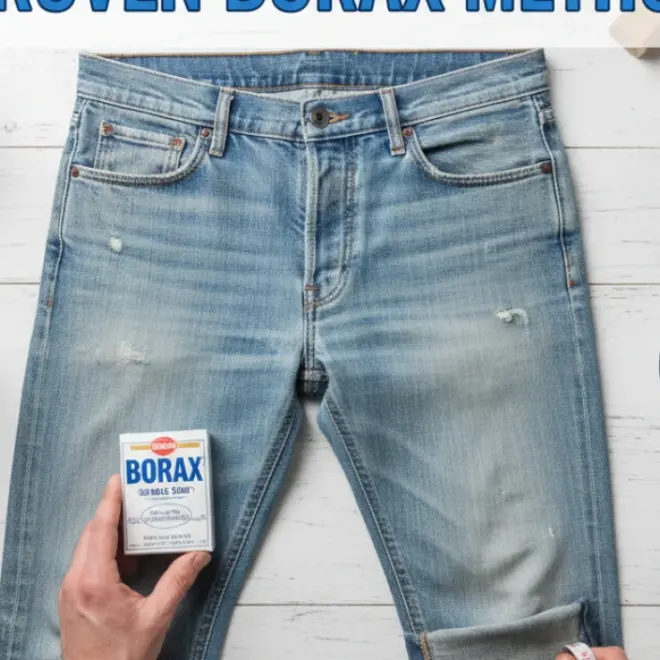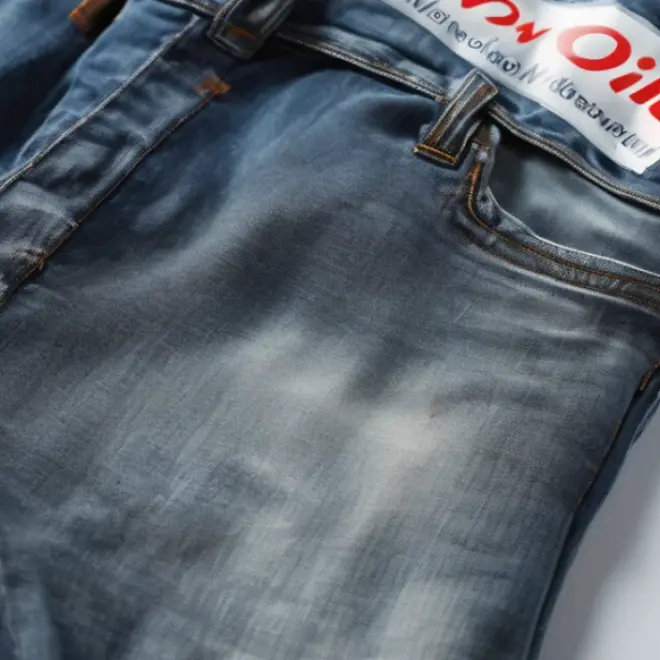Quick Summary: Yes, you can effectively shorten baggy jeans and achieve a cleaner, more fitted look by harnessing the power of Oxyclean. This method provides a surprisingly simple and budget-friendly way to alter your denim without sewing, promising genius results for a better fit.
How to Hem Baggy Jeans With Oxyclean: Genius Results
Do you have a favorite pair of jeans that just aren’t fitting right anymore? Maybe they’ve stretched out, or you bought them a size too big, and now they’re baggy around the waist and legs. It’s a common problem, and the thought of hemming them can feel daunting, especially if you’re not a fan of sewing. Luckily, there’s a clever, no-sew method that can give your jeans a fresh, tailored look. We’ll walk you through how to hem baggy jeans using Oxyclean, transforming them into a pair you’ll want to wear every day.
This guide is designed to be super simple, even if you’ve never tried a DIY clothing alteration before. We’ll break down exactly what you need and the easy steps to follow. Get ready to give your denim a new lease on life and enjoy a perfect fit without the hassle!
Why Your Jeans Might Be Baggy

Several factors can contribute to jeans becoming baggy. Understanding these can help you prevent it or appreciate why this hemming method is so useful.
- Natural Stretch: Many modern jeans, especially those with a blend of cotton and elastane or spandex, are designed for comfort and flexibility. Over time and with wear, these fibers can lose their original rigidity, leading to a looser fit.
- Washing and Drying: Hot water and high heat from the dryer can cause denim fibers to relax and stretch out. Repeated cycles can exacerbate this effect.
- Improper Sizing: Sometimes, we simply buy jeans that are too large, either because we gained weight, the brand’s sizing runs big, or we simply preferred the looser look initially.
- Body Shape Changes: Our bodies change, and a pair of jeans that once fit perfectly might become baggy in certain areas as our shape evolves.
Understanding the Oxyclean Method
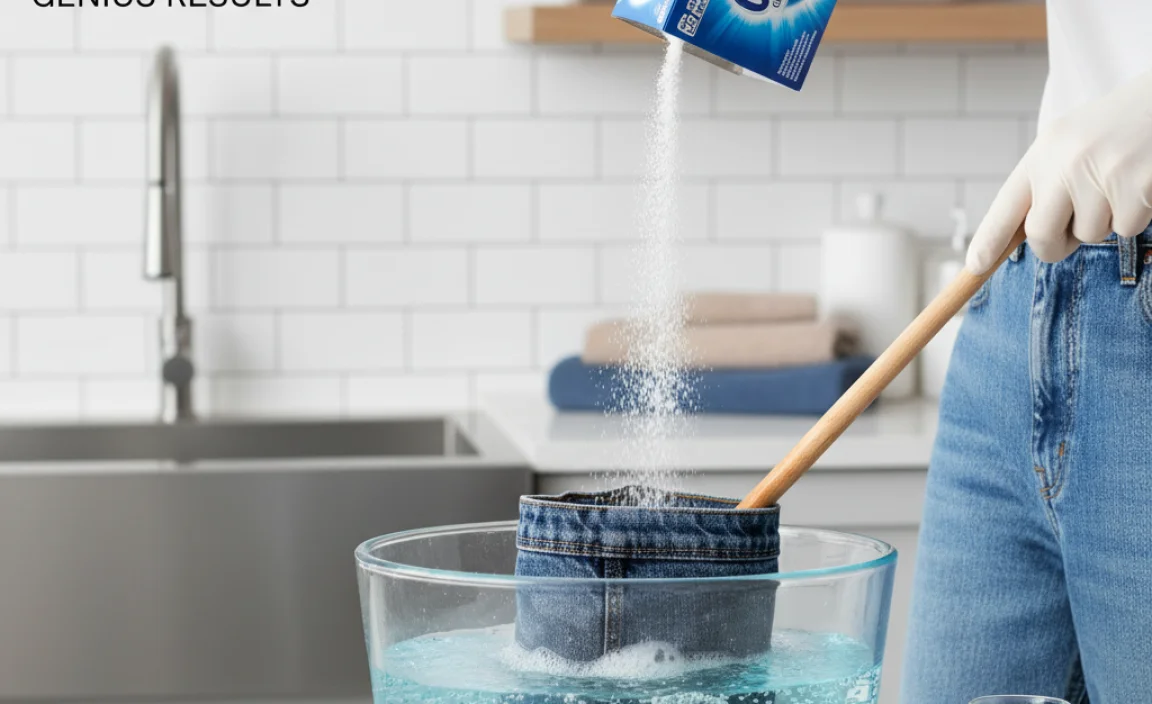
You might be wondering how a laundry booster could possibly hem jeans. The magic lies in how Oxyclean, an oxygen-based bleach, interacts with the fabric and water under specific conditions. When you soak denim in a properly diluted Oxyclean solution and then heat-dry it, the fibers shrink. This shrinking effect can be controlled to shorten the length of your jeans. It essentially works on the principle of heat-induced shrinkage, much like how clothes can shrink in a hot dryer, but with a bit more precision thanks to the soaking process.
This method is a fantastic alternative if you don’t have a sewing machine, lack sewing skills, or simply need a quick fix. It’s about resourceful living and making the most of what you have.
What You’ll Need
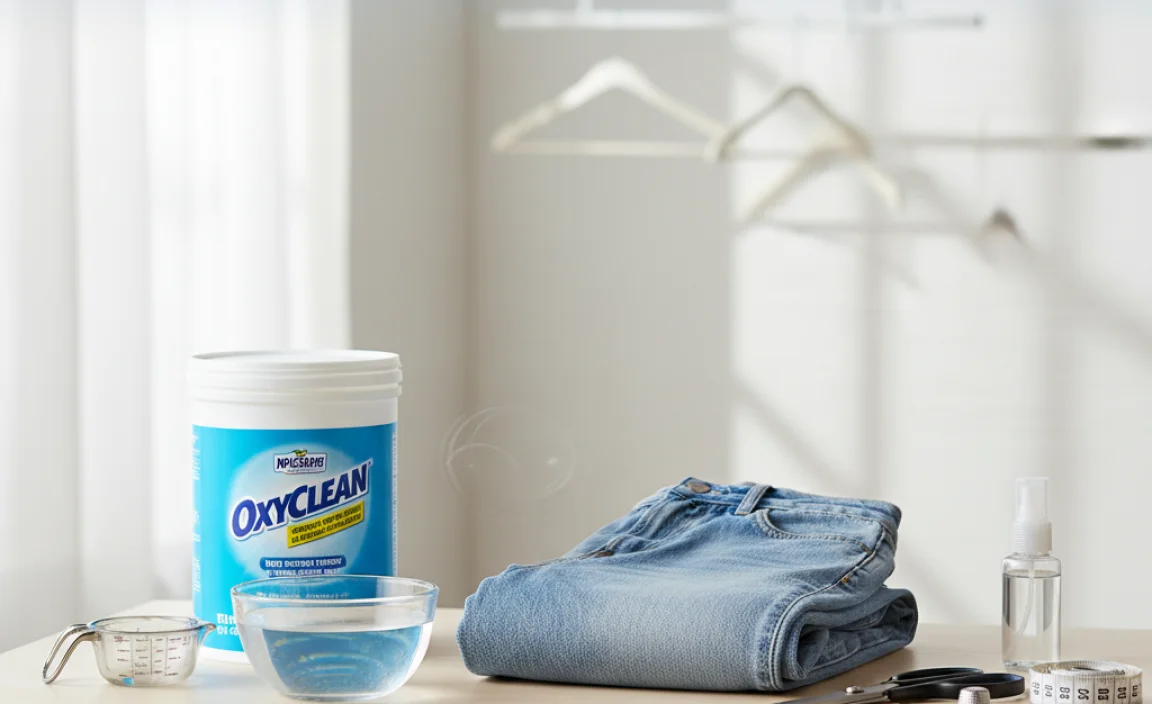
Gathering your supplies is the first step to success. You won’t need much, and most items are probably already in your home.
- Your baggy jeans
- Oxyclean (any variety, but the powder form is most commonly used)
- A large basin, bucket, or clean bathtub
- Hot tap water
- Measuring tape or ruler
- Fabric marker or chalk (optional, for marking desired length)
- Your clothes dryer
- A lint roller (optional, for after drying)
Step-by-Step Guide to Hemming Your Jeans
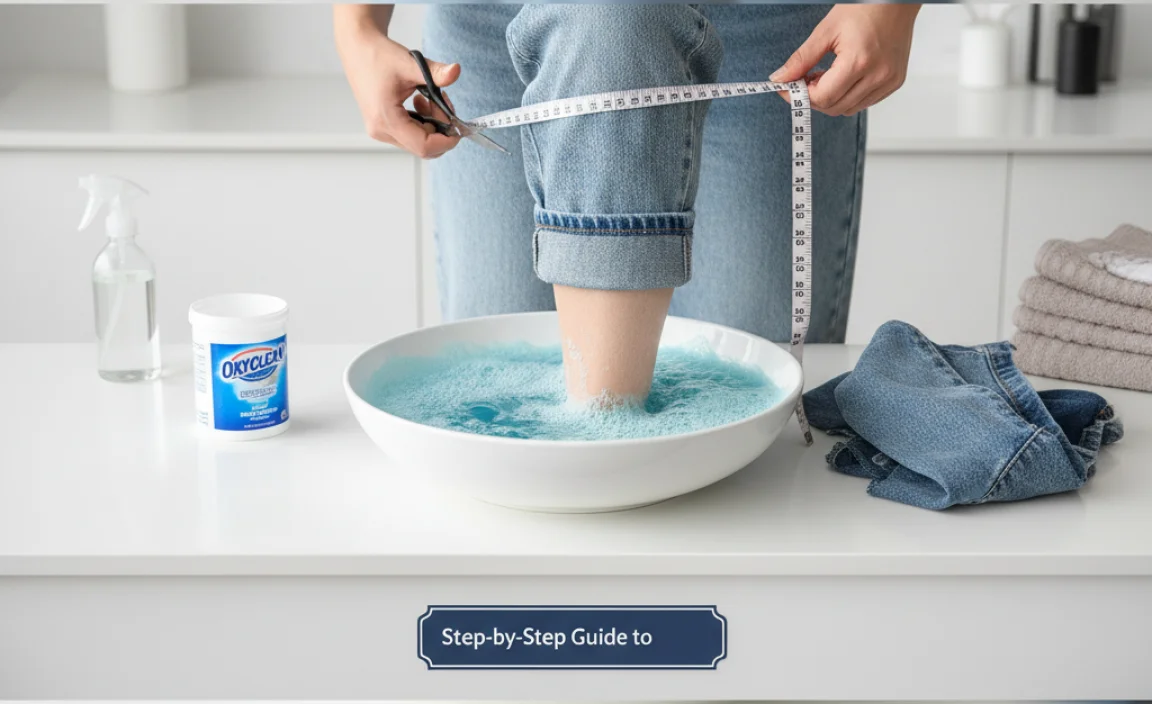
Follow these steps carefully for the best results. Patience is key, as you want to achieve a controlled shrinkage, not an unpredictable mess.
Step 1: Measure and Mark (Optional but Recommended)
Before you start, decide how short you want your jeans to be. Put them on and look in a mirror to gauge the length. You can have someone help you mark the desired hemline with pins or a fabric marker. You can also measure from the crotch down to where you want the hem to fall. Remember, the jeans will likely shrink a bit more than you anticipate, so it’s often better to aim slightly longer than you think you need. If you skip marking, just be prepared to measure again after the process to see how much they’ve shrunk.
Step 2: Prepare the Oxyclean Solution
Fill your basin, bucket, or bathtub with enough hot tap water to fully submerge the part of the jeans you want to shorten – usually from the hem up to the knees or thighs. Check the Oxyclean packaging for the recommended ratio of product to water for soaking. A common recommendation is about 1/4 cup of Oxyclean powder per gallon of water. Stir the water until the Oxyclean is completely dissolved.
Tip: Always wear gloves when handling Oxyclean to protect your skin, and ensure the area is well-ventilated.
Step 3: Submerge and Soak the Jeans
Carefully place your jeans into the Oxyclean solution, making sure that only the lower portion of the legs (the part you want to shrink) is fully submerged. You don’t want to soak the entire jeans, particularly the waistband and upper thigh area, as this could lead to uneven shrinkage.
Let the jeans soak for at least 1 to 2 hours. The longer they soak, the more potential for shrinkage. For significant shortening, you might even leave them for up to 3 hours.
Step 4: Rinse the Jeans
After soaking, carefully remove the jeans from the Oxyclean solution. Rinse them thoroughly with cool water to remove all traces of the Oxyclean. Squeeze out excess water, but do not wring them aggressively, as this can distort the fabric. You want them damp, not dripping wet.
Step 5: Dry on High Heat
This is the crucial step for shrinkage. Place the damp jeans directly into your clothes dryer. Set the dryer to the highest heat setting available. The combination of direct heat and the residual Oxyclean in the fibers will activate the shrinking process. Let them dry completely, which might take a full cycle or more depending on your dryer.
Step 6: Check the Fit and Repeat if Necessary
Once the jeans are completely dry, try them on. Assess the new length and fit. If they are still too long or not as fitted as you’d like, you can repeat the process. It’s generally better to do multiple shorter soaks and drying cycles rather than one very long one to maintain more control over the shrinkage.
Important Note: The amount of shrinkage can vary significantly based on the fabric composition of your jeans. Denim with a higher percentage of natural fibers (like 100% cotton) will shrink more than denim with a significant amount of synthetic fibers (like polyester or elastane). Always check the fabric content on your jeans’ care label.
Fabric Content and Shrinkage Potential
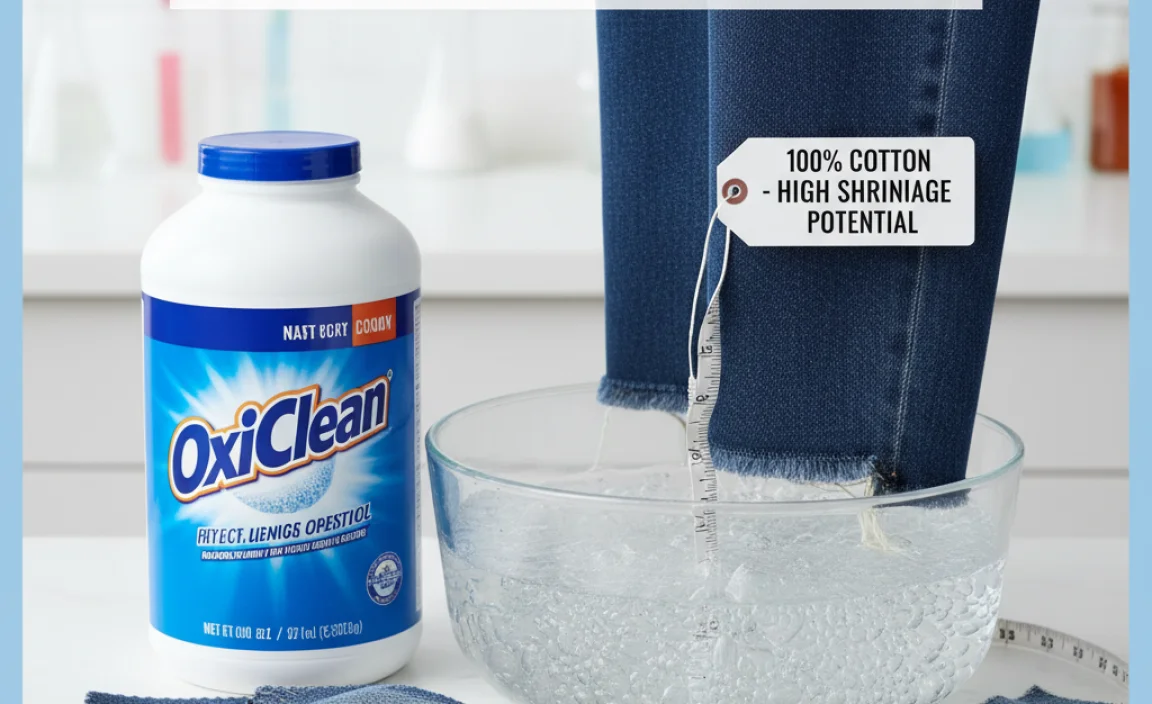
The degree to which your jeans will shrink using this method is heavily dependent on their material. Understanding your denim’s composition can help you set realistic expectations.
Here’s a general guide to how different fabric blends might react:
| Fabric Composition | Expected Shrinkage (Oxyclean Method) | Notes |
|---|---|---|
| 100% Cotton (Raw/Selvedge Denim) | High | These fabrics are notorious for shrinking. Expect significant length reduction and potential waist/thigh shrinkage as well. |
| 100% Cotton (Pre-Shrunk/Sanforized) | Moderate | These have undergone some shrinkage in manufacturing. They will still shrink, but likely less dramatically than raw denim. |
| Cotton/Polyester Blend (e.g., 70% Cotton, 30% Polyester) | Low to Moderate | Polyester is a synthetic fiber that resists shrinking. Shrinkage will be noticeable but less pronounced. |
| Cotton/Elastane or Spandex Blend (e.g., 90% Cotton, 10% Elastane) | Low | Elastane provides stretch and comfort. It also makes the fabric less prone to significant shrinkage. The fit might become slightly less baggy but rarely much shorter. |
| Other Synthetic Blends (Rayon, Lyocell, etc.) | Variable/Low | Shrinkage is highly dependent on the specific synthetic fibers used. Most synthetics do not shrink much with heat. |
For precise information on fabric care and shrinkage, you can consult resources like the Federal Trade Commission’s guide on caring for clothing, which offers general advice on understanding fabric labels and textile properties.
Pros and Cons of the Oxyclean Hemming Method
Like any DIY technique, this method has its advantages and disadvantages. Knowing these can help you decide if it’s the right approach for you.
Pros:
- No Sewing Required: Ideal for those who can’t or don’t want to sew.
- Cost-Effective: Uses common household items, making it very affordable.
- Quick and Simple: The process is straightforward and doesn’t require special skills.
- Achieves a “Shrunk” Look: Can give jeans a more fitted, less baggy appearance.
- Improves Fit: Effectively shortens jeans that are too long.
Cons:
- Unpredictable Shrinkage: The amount of shrinkage can vary, making it hard to get an exact measurement.
- Fabric Dependent: Works best on 100% cotton or high-cotton blends. Less effective on synthetic-heavy fabrics.
- Potential for Unevenness: If not careful, you might end up with a slightly uneven hem.
- May Affect Color: While Oxyclean targets stains, prolonged soaking or stronger solutions might slightly lighten dark denim. Always test on an inconspicuous area if concerned.
- Not a Permanent Hem: The shrinkage is generally permanent, but it doesn’t create a finished hem edge like sewing does. You might end up with a raw or slightly frayed hem, which can be a desired look for some.
Alternative No-Sew Hemming Methods
If the Oxyclean method isn’t quite right for your jeans or budget, here are a couple of other no-sew options:
- Fabric Glue or Hem Tape: These are fabric-specific adhesives that you can use to fold and secure the hem. Iron-on hem tape is particularly effective for a clean finish. You’ll still need to cut the jeans to your desired length first.
- Fabric Scissors and Fold: The simplest method if you’re okay with a raw hem. Cut the jeans to your desired length, then fold the edges up twice to create a clean, slightly thicker hem that won’t unravel too much. This works best on thicker denim.
For more on fabric care and understanding textile properties, the International Organization for Standardization (ISO) provides standards related to textiles, including testing methods for shrinkage, which highlights the scientific nature of fabric behavior.
Tips for Best Results
To maximize your success with the Oxyclean hemming method, keep these tips in mind:
- Always check the fabric composition: This is the most critical factor. If your jeans are mostly synthetic, this method may not yield significant results.
- Be conservative with soaking time: You can always repeat the process if needed. Over-soaking can lead to excessive shrinkage or potential color fading.
- Use hot water: Hot water is essential for activating the shrinking properties of the fibers.
- Dry on high heat: This step is non-negotiable for achieving shrinkage.
- Consider the final look: Decide if you want a clean, finished hem or a raw, slightly frayed edge. This method typically results in a raw edge that can be tidied up, or left as is.
- Protect your workspace: Use a well-ventilated area and protect surfaces from potential spills or splashes.
- Wear gloves: Oxyclean can be harsh on the skin.
Addressing Potential Issues
Even with careful preparation, you might encounter a few hiccups. Here’s how to handle them.
Issue: Jeans didn’t shrink enough.
- Solution: Repeat the soaking and drying process. Try soaking for a little longer this time, or use a slightly stronger solution (but be cautious with this). Ensure you are using the highest heat setting on your dryer.
Issue: Jeans shrunk too much.
- Solution: Unfortunately, if jeans shrink too much, it’s very difficult to reverse. This is why careful measurement and conservative soaking are recommended. For future attempts, soak for a shorter duration or use less Oxyclean.
Issue: Uneven hemline.
- Solution: This can happen if the jeans were not submerged evenly or if the fabric had uneven tension. You can try to even out the raw edge by carefully trimming with sharp fabric scissors. For a more refined look, you can then fold the edge up twice and use a fabric glue or hemming tape to secure it.
Issue: Color faded.
- Solution: While Oxyclean is oxygen-based and generally safe for colors, prolonged exposure or higher concentrations can sometimes lead to slight fading, especially on very dark or saturated dyes. If this occurs, you can try refreshing the color with a fabric dye, or embrace the slightly faded, vintage look.
Frequently Asked Questions (FAQ)
Q1: Will this wash out the color of my jeans?
A1: Oxyclean is an oxygen-based bleach designed to be color-safe on most fabrics. However, very dark or heavily dyed jeans can experience some slight fading, especially with prolonged soaking. It’s always wise to test on an inconspicuous area if you’re concerned.
Q2: Can I use liquid Oxyclean for this method?
A2: While the powder form is more traditional for soaking, liquid Oxyclean can also be used. Follow the product’s instructions for dilution ratios for laundry boosters or pre-soaks. Ensure it’s fully mixed into the water.
Q3: How much shrinkage can I expect?
A3: Shrinkage varies greatly depending on the denim’s fabric composition. 100% cotton jeans will shrink the most. Jeans with spandex or polyester blends will shrink much less, if at all. Aim for about 0.5 to 1.5 inches of shrinkage per cycle for 100% cotton.
Q4: What if I want a clean, seamed hem?
A4: This Oxyclean method typically results in a raw or slightly frayed hem edge. If you desire a clean, finished hem, you will need to follow up by sewing your desired hem. Alternatively, use fabric glue or iron-on hemming tape after cutting the jeans to size, which is another no-sew option.
Q5: Can I use this method on other types of pants?
A5: This method is primarily effective on denim and 100% cotton fabrics. Synthetic fabrics like polyester, nylon, or rayon are very resistant to shrinking with heat and Oxyclean, so it’s not recommended for those materials.
Q6: Should I soak the entire jean or just the legs?
A6: For hemming, you generally only want to soak the portion of the leg you wish to shorten. Submerging the entire garment, especially the waistband and upper thighs, can lead to uneven shrinkage or an unflattering fit in other areas.
Conclusion
Transforming baggy jeans into a perfectly fitting pair doesn’t have to be a complicated or expensive endeavor. By using an accessible household product like Oxyclean, you can achieve surprisingly good results without ever picking up a needle and thread. This method leverages the natural tendency of denim fibers to shrink when exposed to heat and moisture, giving you a simple, budget-friendly way to customize your denim.
Remember to consider your jeans’ fabric content, measure carefully, and be patient through the soaking and drying stages. While it might take a repeat cycle or two to get the length just right, the outcome is well worth the effort. You can now enjoy a cleaner silhouette and a more flattering fit, all thanks to a little laundry magic and a willingness to experiment. Happy hemming!



